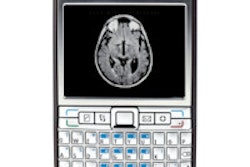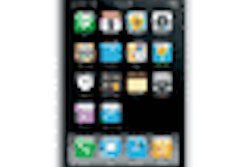The first clinical use of teleradiology in the late 1970s and early 1980s began with video photographs transmitted by telephone. Could the same concept, updated with digital images from mobile phones, be used today when no radiologists or teleradiology systems are available?
Researchers at the University Hospital Bonn in Germany tested the concept, reporting on their experiment in the October issue of PLOS One. They determined that while not acceptable for diagnosis, images from mobile phones could provide useful information to radiologists and orthopedic specialists in the absence of a workstation.
Lead author Dr. Hans Goost of the department of orthopedic and trauma surgery and colleagues were interested in determining if using a mobile phone to take pictures of digital radiographs and send them for interpretation could expedite diagnosis in emergency situations and/or facilitate planning for surgery.
The researchers used a Nokia N 95 mobile phone with an integrated camera equipped with an additional SD card to store up to 8 GB of images. The camera had a resolution of 2,592 x 1,944 pixels and up to 5 megapixels of data. Its focus range was between 10 cm and infinity. Photographs could be stored as JPEG or exchangeable image file format.
The researchers photographed 100 digital x-ray images of nine body regions selected from the accident and emergency department of the hospital. The regions included the spinal column, thorax, shoulder and upper arm, elbow and lower arm, hand, pelvis and hip, femur and knee, lower leg and upper ankle joint, and foot.
There were 10 pediatric injuries and 30 images without pathological findings. On the selected images with pathological findings, the findings were clearly visible and did not include difficult-to-identify fracture lines.
The images were photographed in black-and-white mode without using the flash function on the camera. The distance between the camera and the screen was 30 cm. Each x-ray image was photographed several times. The best image was sent as an email attachment to five physicians, only one of whom was a radiologist. The others were specialists of the University Hospital Bonn Department of Orthopedic and Trauma Surgery.
The majority of images (ranging from 265 to 590 KB of data) took less than 60 seconds to arrive by email. Several took as long as 11 minutes.
All reviewers used the same model (Lenovo T500) laptop computer, which had a screen resolution of 1,280 x 800 pixels and a 32-bit color depth. The reviewers were asked to rate image quality on a scale of one (poor) to 10 (excellent) with respect to sharpness, brightness, and contrast. Reviewers were asked to interpret each image.
Diagnosis and image quality
The reviewers made unanimous and accurate diagnoses for 61% of all transmitted images. Images of long tubular bones and large joints had a higher rate of concurrence than in the spinal region and small joints. Images that were diagnosed correctly more than 80% of the time were the pelvis/hip and femur and knee images, followed by the spinal column at 75%. Images with a 60% score included the elbow and lower arm and the lower leg and upper ankle joint.
Pediatric images were difficult to diagnose, with only 30% accurately diagnosed. Images from the thoracic region, particularly subtle details of the lung, also were difficult to assess and received the lowest scores (17% accuracy).
Images with normal findings were accurately diagnosed 57% of the time.
The assessment of image quality was as expected rated lowest by the radiologist, who assessed the 100 images with scores of 2.8 to 3.4 out of a score of 10. The orthopedic specialists had very similar ratings, from 5.0 to 6.6. None of the specialists felt that the images could be considered of diagnostic quality.
The authors also pointed out that diagnosis using a laptop computer would also be illegal because it would violate the European X-ray Ordinance that stipulates use of specific workstations. But in a situation where specialists are not onsite and a teleradiology system is unavailable, this original method of teleradiology may be suitable in facilitating decision-making about an injured patient.



















